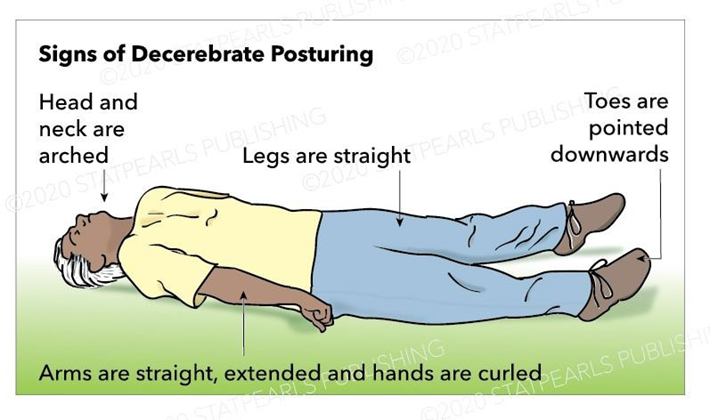The nurse employed in an emergency department is instructed to monitor a child diagnosed with epiglottitis. The nurse notes that the child is leaning forward with the chin thrust out. The nurse interprets this observation as indicating which finding?
Extreme fatigue
An airway obstruction
The presence of dehydration
The presence of pain
The Correct Answer is B
B. Leaning forward with the chin thrust out, often described as the "sniffing position," is a classic sign of airway obstruction, particularly in cases of epiglottitis. This positioning helps to maximize airway patency by opening the airway and reducing the risk of further obstruction.
A. Leaning forward with the chin thrust out is not typically associated with extreme fatigue. Instead, it is a specific positioning often seen in individuals with epiglottitis to help alleviate airway obstruction and facilitate breathing.
C. Leaning forward with the chin thrust out is not indicative of dehydration. Dehydration may present with other signs and symptoms such as dry mucous membranes, decreased urine output, sunken fontanelle (in infants), and poor skin turgor.
D. Pain may be present in a child with epiglottitis but leaning forward with the chin thrust out is not primarily indicative of pain. This positioning is primarily a compensatory mechanism to alleviate airway obstruction rather than a response to pain.
Nursing Test Bank
Naxlex Comprehensive Predictor Exams
Related Questions
Correct Answer is A
Explanation
A. This statement indicates that the mother understands the purpose of giving pancreatic enzymes to her child with cystic fibrosis. Cystic fibrosis can cause pancreatic insufficiency, leading to difficulty digesting fats and other nutrients. Pancreatic enzymes help to supplement the deficient digestive enzymes, aiding in the digestion of fats and improving nutrient absorption.
B. Pancreatic enzyme capsules are typically meant to be swallowed whole, not chewed. Chewing the capsules could affect their effectiveness by prematurely releasing the enzymes in the mouth rather than in the stomach where they are needed for digestion.
C. While pancreatic enzymes can help with digestion and may indirectly reduce symptoms like nausea by improving nutrient absorption, their primary purpose is not to prevent nausea.
D. Pancreatic enzymes are usually taken with meals or snacks to aid in the digestion of food. The timing of pancreatic enzyme administration may vary depending on the child's eating schedule and the specific instructions provided by the healthcare provider, but taking them 2 hours before meals would not typically be recommended.
Correct Answer is D
Explanation
D. This is the correct characteristic of decerebrate posturing. Decerebrate posturing is characterized by rigid extension and pronation (turning inward) of the arms and legs. It indicates severe neurological dysfunction and increased intracranial pressure, often involving damage to the brainstem.

A. This characteristic is not associated with decerebrate posturing. Adduction refers to movement toward the midline of the body, which is not typically observed in decerebrate posturing.
B. This description is not characteristic of decerebrate posturing. Decerebrate posturing involves extension, not flexion, of the upper extremities, along with extension and pronation (not adduction) of the lower extremities.
C. Flaccid paralysis refers to the absence of muscle tone and movement, which is not characteristic of decerebrate posturing. Decerebrate posturing involves increased muscle tone and abnormal, rigid extension of the arms and legs.
Whether you are a student looking to ace your exams or a practicing nurse seeking to enhance your expertise , our nursing education contents will empower you with the confidence and competence to make a difference in the lives of patients and become a respected leader in the healthcare field.
Visit Naxlex, invest in your future and unlock endless possibilities with our unparalleled nursing education contents today
Report Wrong Answer on the Current Question
Do you disagree with the answer? If yes, what is your expected answer? Explain.
Kindly be descriptive with the issue you are facing.
